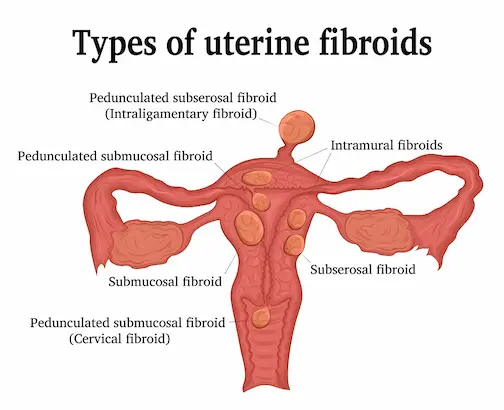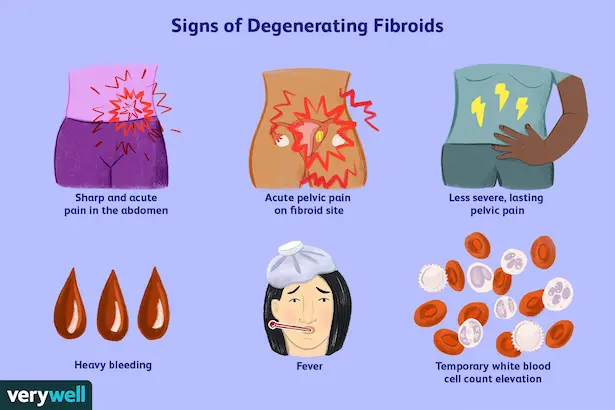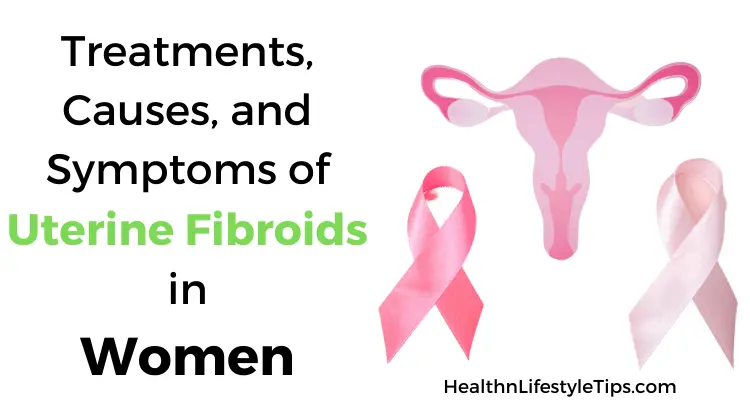Uterine fibroids are non-cancerous growths in the uterus. They are one of the most common conditions affecting women of reproductive age and can have a significant impact on fertility, health, and quality of life.
As such, it is important to understand what fibroids are, what causes them, and how they can be treated.
What are Fibroids in Uterus?
Fibroids are benign tumors that originate from the muscular layer of the uterus. They may be single or multiple in number and vary in size from a few millimeters to several centimeters in diameter.
Fibroids can cause pain, discomfort, heavy menstrual bleeding, and infertility if left untreated. It is estimated that up to 70% of women over 40 years old have uterine fibroids.
Cause of Uterine Fibroids
The exact cause of uterine fibroids remains unknown but research suggests that hormones like estrogen and progesterone may play a role in their development. Environmental factors such as obesity, diet, and lifestyle choices may also contribute to the growth of fibroids.
Treatment options vary depending on the severity of symptoms and include medications, surgical procedures, or natural remedies such as yoga or acupuncture.
Types of Uterine Fibroids in Women
Fibroids can be categorized into four distinct types based on their location and growth pattern.
- Intramural fibroids are the most common type of fibroid and grow within the muscle layer of the uterus.
- Subserosal fibroids form on the outer surface of the uterus and can grow outward from it.
- Submucosal fibroids are located beneath the inner lining of the uterus and can cause heavy menstrual bleeding due to their proximity to the endometrium.
- Pedunculated fibroids are a rare type of subserosal fibroid that grows on a stalk or stem-like structure, allowing them to move freely in the uterus.

Treatments for Fibroids
Treatment for fibroids depends on their size and location, as well as any symptoms they may be causing. If there are no symptoms present, no treatment may be necessary. However, if symptoms become severe or disrupt daily life, medications such as hormonal contraceptives or GnRH agonists may be prescribed to reduce or eliminate them.
Surgery is an option for larger growths that cannot be managed with medication alone, but this should only be considered after discussing all options with a healthcare provider.
Common Signs And Symptoms of Fibroids
Most fibroids are asymptomatic and may go unnoticed. However, they can cause a range of different symptoms that depend on their size and location.
Common signs and symptoms of fibroids include pelvic pain or pressure, heavy menstrual bleeding, frequent urination, constipation, bloating, and backaches.

If a fibroid is pressing on the bladder or bowel, it can also lead to urinary incontinence or indigestion. Severe cases may lead to infertility or miscarriage due to abnormal growths blocking the fallopian tubes or preventing implantation of a fertilized egg in the uterus.
It is important for individuals experiencing any of these symptoms to seek medical advice from their healthcare provider as soon as possible in order to get an accurate diagnosis and receive appropriate treatment if necessary.
In some cases, lifestyle changes such as reducing stress levels or following a balanced diet may be enough to reduce fibroid-related symptoms. However, if more serious interventions are needed such as surgery or medications, the earlier they are initiated the better the outcomes will be.
Hormone Specifics Uterine Fibroids
The exact cause of fibroids is not known, but there are several theories as to what might be responsible for the abnormal growth of cells in the uterus. One theory suggests that hormones such as estrogen and progesterone have a role in the development of fibroids.
It has been observed that menstrual cycles can trigger fibroid growth and that women taking hormone replacement therapy (HRT) may be more likely to develop them.
Genetics also appear to play a part in the development of fibroids, as they tend to run in families. There is also evidence that lifestyle factors such as diet and stress levels could influence their growth.
Studies have found an association between high caffeine consumption, alcohol intake, and diets high in red meat with a higher risk of developing these abnormal growths. Additionally, individuals with chronic stress or depression may experience prolonged hormone imbalances which could contribute to the formation of uterine fibroids.
The imbalance of hormones can be attributed to the types of products that women used. Makeup, vaginal rinses, tampoons, skincare, and other products have been linked to hormone imbalance and the subsequent growth of fibroids.
Recently, hair relaxers have been noted to contain chemical compounds that cause fibroids and certain cancers. They have since been recalled and lawsuits have been filed for individuals to seek proper compensation for damages.
There is no single definitive cause for the development of fibroids and it is likely that multiple factors play a role in their formation. However, any individual experiencing signs and symptoms related to these abnormal growths should seek medical advice from their healthcare provider for an accurate diagnosis and appropriate treatment if necessary.
Diagnosis Fibroids in the Uterus
When it comes to diagnosing fibroids, a range of imaging techniques such as ultrasound, CT scans, and MRI can be used to assess the size and location of the growths. In some cases, a hysteroscopy may also be necessary in order to get a clearer view of the uterus.
After a diagnosis is made, treatment options depend on the size and location of the fibroids as well as any symptoms that may be present.
Discuss all available diagnoses and treatment options with your healthcare provider before making any decisions about how best to manage your condition. With proper management and care, many individuals are able to successfully manage their condition and lead healthy lives.
Conclusion
Fibroids are a serious health condition. Understanding the different aspects can assist individuals in seeking the proper medical attention that they need.
